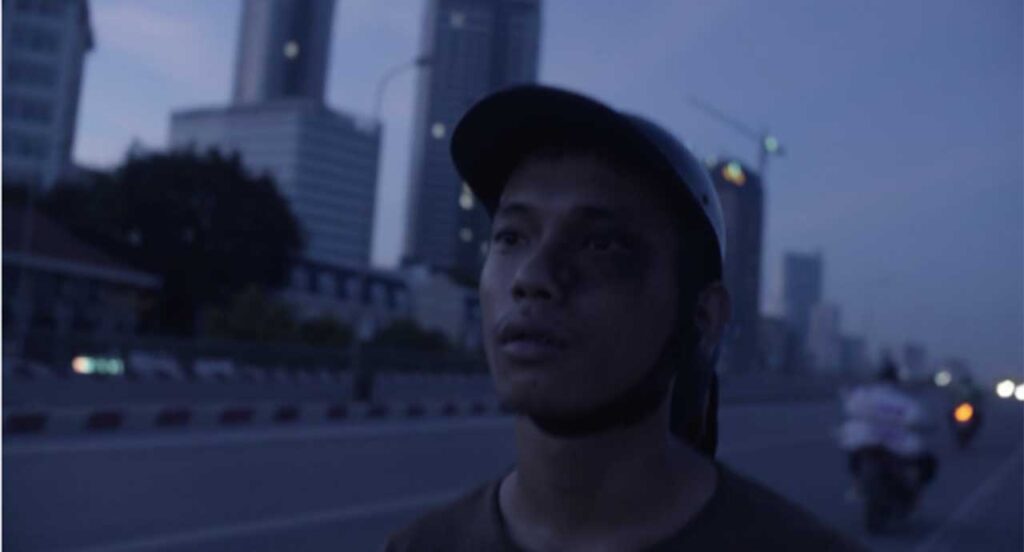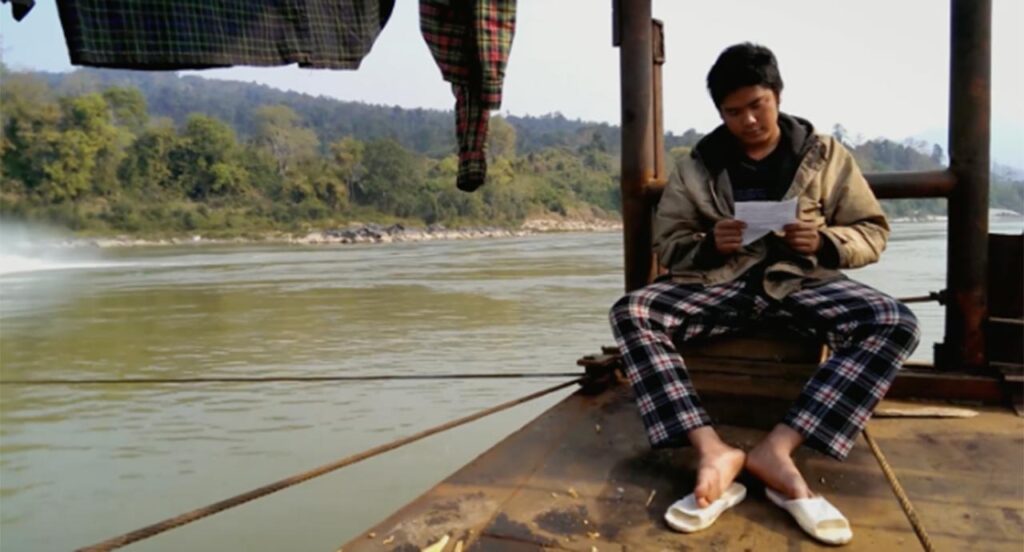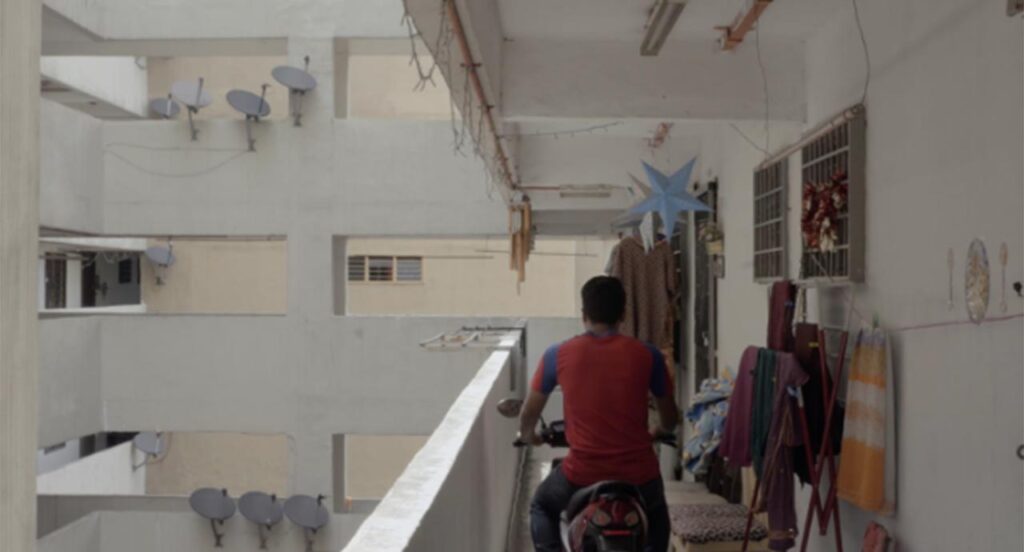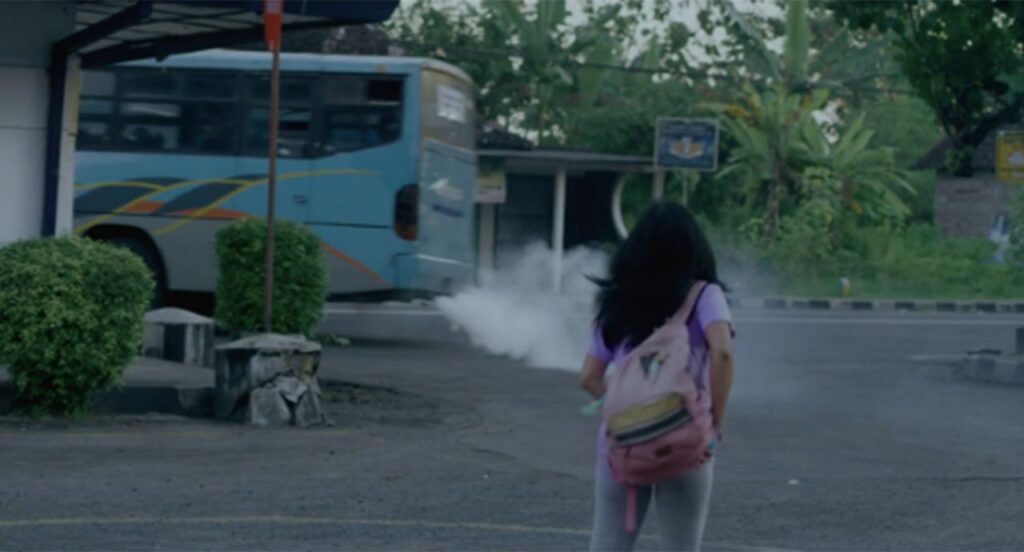Traversing Cinematic Distances
On screen, unlike in real life, time spent in transit is a choice. A distance of a thousand miles; hours of time spent in the stuffy half-dark of an airplane cabin, or a walk in the arid heat can all be circumvented with a single cut. But this doesn’t always happen. Films in this year’s Southeast Asian Short Film Competition present us with images of travel that allow not only for an exploration of characters’ environments, but characters themselves. Movement in these films carries a multiplicity of meanings: it both represents and highlights a failure to escape, while facilitating growth and revealing stagnation. Characters move because of their pasts and their futures, willingly and unwillingly, and it is these moments of travel – in the ways characters move, why they move, and where they are moving toward – which allows us to better understand who they are and who they might become.

Living as a gay man in Thailand, the Ant Man’s marginality and suffering is written onto his body. The protagonist of Viet Vu’s film, we, at points, watch him move in the same way as the insects that live under his skin and mark him as horrifically different. Writhing and crawling across floors, he appears transformed, barely human in his uncomfortable, bleak existence. And yet, his struggle is juxtaposed with images of other characters carrying out their work and paying him no attention in the background, or with scenes where the Ant Man sits in coffee shops, participating unassumingly in regular society, creating a dissonance that makes his isolation feel all the more intense. The film is bookended with scenes of the Ant Man on the back of a motorcycle, staring blankly at the retreating road, and though the first instance of this is brief, it primes us to understand that little has changed throughout the course of the film. As once again, our protagonist moves through the night, back to the future and with an impassive face, his travel generates a deep sense of helplessness as he appears alienated from his own future, dragged through his own life by the forces of the world.

The world of Lee Yong Chao’s Gold is perpetually in movement. Set on a small gold mining boat, Gold’s story is told in letters written from its protagonist, a young man working on the boat, to Lily, the woman he is love with. Here, the film’s central character’s endless journey is one of futility and loss. As the film progresses, he speaks of how his desire to see Lily again drives him as he performs his tireless work, sifting through sand day after day in the hope that one day he will make enough money to return home and settle down with her. Yet, these letters go unanswered and rather than the longing of two lovers, we hear a monologue set against a backdrop of constant work in which days go undifferentiated and time appears to stretch on forever. The boat’s slow decay forces constant repairs and the recognition that his time is limited. Lily’s long silence leads us to suspect a similar breakdown in their relationship. And thus, when the boat finally sinks into the river and Lily finally sends a reply only to break up with him, it provokes in us less sorrow than resignation. This, however, does not mean he may conclude his journey. In the closing moments of the film, we watch him walk off into the distance, carrying only a backpack. Dwarfed by the vast landscape, travel appears futile and unrewarding and yet, inevitable as he finds himself forced to move forward even though neither end, nor direction appear to be in sight.

In High Way by Chia Chee Sum, a young man traverses the narrow corridors of high rise apartment blocks on the back of a motorcycle. Bouncing back and forth between his separated parents’ homes running banal errands, his use of the motorcycle functions to highlight the wideness of the gulf between his parents. It also suggests that our protagonist is trapped in a world that limits and constraints him. Our protagonist does not seem to belong in any one space; his belongings hang on racks outside his parents’ homes and we see him enter them only briefly and out of necessity. His motorcycle becomes almost an island; ironically, his only place of stability and constance. Even as we hear our protagonist speaking to his parents and friends, he inhabits the frame mostly alone, his counterparts experienced only as disembodied voices. As the film draws to a close and fails to provide us with a moment of meaningful connection, the distances between people in High Way’s world appear to be simultaneously minute and unbridgeable.

A Room With A Coconut View by Tulapop Saenjaroen is a film curiously lacking in human presence. Following the experiences of Alex, a tourist in the resort town of Bangsaen, the film is narrated solely in computerised voices – an affect which adds to the film’s idiosyncratic sense of humour and creates a world in which the notion of travel is problematized as characters move through a digital space in which time and distance become almost immaterial. Alex, however, moves through the town much like any corporal tourist, taking us to popular tourist spots. As he derives little pleasure from his explorations, they begin to feel less like escape than routine. He discovers that the vacation that was meant to serve as an escape from the mundanity of his life has merely imposed on him new obligations and produced different frustrations which, ironically, wear him down. Ultimately, it is only through the consumption of drugs that Alex is truly able to find any sort of reprieve from his frustrations. As we reckon with the futility of travel, it appears that the distance Alex attempted to seek through travel is not one from the world he has left behind, but from himself.

In Ninndi Raras’s Elinah, travel is a means of escape. Caged physically and metaphorically by her husband and the constraints of her small unhappy home, our heavily pregnant titular protagonist attempts to board a bus out of town, carrying only a small wad of cash and a backpack of her belongings. Elinah’s childlike nature and wonder at the world around her has us rooting for her to succeed in her quest, yet, it is precisely this nature that thwarts her escape attempt. As Elinah happily watches fish nibble at her feet at a fish spa, we see the bus she meant to take pull out of the frame, taking her hopes of freedom with it. The home Elinah now returns to appears more claustrophobic as we see her through the rigid frames of its doors and windows. Succour, however, arrives in an unexpected form as the baby Elinah blames for her failed runaway attempt inexplicably disappears overnight. Though Elinah appears to return to her regular chores, a butterfly lands on the well from which Elinah is drawing water, recalling an image from the beginning of the film, and we imagine that her journey is not quite over yet.

But, the picture is not always so bleak- the journeys characters make across cinematic spaces are sometimes productive. In The Sea Recalls, the journey that is undertaken is one not only across space, but also time. An autobiographical documentary, The Sea Recalls is director Aekaphong Saransate’s attempt to find closure for the passing of his uncle who along with his wife, was shot in his home years ago. Although Saransate embarks on a quest to unravel the mystery, it is not the gritty details of the crime that he takes interest in, but the responses of his uncles and aunts who have yet to come to terms with the tragedy. Here, old footage of beachgoers allude to what might have been; the good memories the family might have made had the circumstances under which they had grown up were different. In the final moments of the film, we watch as the family, who until then we have known only in individual interviews with Saransate, take a journey to that beach. As their conversations become a mix of ruminations on the past (discussions of what the beach used to be like) and plans for the present (discussions about mundane aspects of their everyday lives), we watch the family write a new story for itself, one that does not exclude its tragedies but builds on top of them. Ultimately, though the journey we have undertaken provides us with few answers, we nonetheless feel one step closer to letting go.
The journeys taken by characters in short films are never merely physical ones. The Ant Man and protagonist of Gold embark on solitary travels with little hope of settling down and in this draw maps of their own marginality. A Room With The Coconut View and High Way draw attention through travel to the dissatisfactions of modern life and the difficulties of forming human connection. And, more optimistically, Elinah’s brief rebellion brings her closer to personal freedom and the family’s trip to the beach in The Sea Recalls brings them closer to a coming to terms with their past. Therefore, to traverse cinematic distances is to attempt to navigate a difficult world, to shape and be shaped by circumstance.


